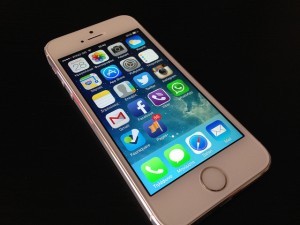Since the iPhone was first introduced in 2007, mobile devices have changed not only the behavior of consumers, but also their expectations.

Deliver the right information, at the right time, in an intuitive fashion | Photo: John Karakatsanis (Flikr)
We live in a world with 24-hour shopping, gaming, entertainment, access to information, and more all at our fingertips even when we are on the go. Mobile devices have caused a massive shift in the way people interact, not only with each other, but with the businesses around them.
Over this same time frame, mobile apps have grown and improved and now are able to offer powerful user experiences to cutting edge consumers. Quality mobile apps enable their users to fulfill a need efficiently and intuitively. Conversely, application users can become frustrated quickly and abandon poor quality apps.
Mobile Has Changed the Way We Do Business
Each of the past few years has seen accelerating growth in the number of companies turning their attention to mobile app development. This is trend is expected to continue to grow in the near future as more and more businesses are contacting mobile application developers and hiring in-house talent.
While the iPhone was only released a few short years ago, many companies are already significantly behind the curve. At the heart of the problem is a lack an effective mobile strategy. Many companies are releasing mobile applications which fail to consider trends in mobile application development, and worse yet; they do not fully understand their audiences and their expectations.
Beyond business and audience specific considerations, many businesses just do not fully understand mobile. Unfortunately, businesses that find themselves in that position will also find themselves getting left behind.
Stay on Top of the Rapidly Moving Technology Curve
A thorough and well-thought-out mobile strategy is critical to success. Remember, if your mobile application does not address real user needs, it will not create a favorable impression and it will have a high abandonment rate. A well thought out strategic plan can allow your business to invest wisely in your mobile applications.
If you want to stay ahead of your competition you will need to create an engaging user experience for your mobile application. Doing this requires a careful examination of what your business wants to accomplish, but beyond that, you need to look at the audience you are trying to reach and what that audience is looking for.
The goal is to deliver the right information, at the right time, in an intuitive fashion, and if you can do that it will drive user adoption rates and increase loyalty and brand awareness.
What does mobile mean for business? Forrester Research states “In 2015, marketing leaders who have embraced the mobile mind shift will accelerate spending to create an insurmountable gap between themselves — the industry leaders — and the laggards who view mobile as just another channel.”
Where to Start?
To start your process, begin by taking a good look at your customers (potential app users). Try to see your application and business from their perspective and determine what matters to them. You will need to dig deeper than looking at a few numbers though.
UI | UX specialists are trained to understand the process. They can help you understand the key touch points to the process and other important considerations regarding how your user base will interface with your application. UI specialists can help take user reactions and expectations along with your business goals to design applications that will be most effective.
When your in house personnel can work with researchers and design and development teams with these goals in mind, you can build software that meets your user’s needs. Don’t adopt an attitude that you can sit back and wait. If you don’t already an effective mobile strategy, you are already behind the curve.
Photo: http://bit.ly/1InPnLS
Kimber Johnson
Latest posts by Kimber Johnson (see all)
- How Your Business Can Create Great Customer Experiences - February 5, 2017
- How to Capitalize on Opportunities Created by Mobile Commerce - January 4, 2017
- Mobile App Monetization Trends for 2017 - December 4, 2016
